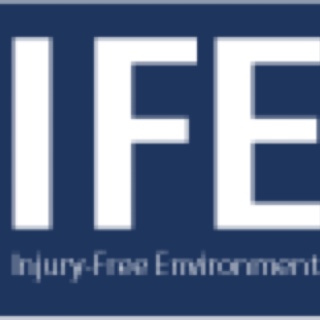Title Page
-
Document No.
-
Audit Title
-
Client / Site
-
Conducted on
-
Prepared by
-
Location
-
Personnel
What you notice when you arrive Must Do (Compliance/Requirements)
-
A fence and/ or secure perimeter, Skanska branding
-
Clean and organize out side the fence
-
Project team conducts stretch and flex and pret-task plans each morning and all subs participate
-
Proper signage on the fence related to IFE/PPE/check in procedures
-
Control worker entry points ( not multiple points)
-
Public protected from safety hazards (overhead protection, barriers, etc.)
-
Entry points have gates that are lockable
What you notice when you arrive BEST PRACTICE-BEST IN CLASS
-
Gates are manned
-
General attitude of people choosing to follow the rules versus being forced to
-
Hear things like "This is the best project I don't think I have ever been on, I almost don't want to go to the next job"
-
Site has a culture of cleanliness-not a cycle of messy and then big cleanup
-
People know each other by name
-
All Skanska staff participate in S&F and Pre task planning and Skanska Staff and subs understand the benefit of S&F and make Pre-task The most important part of their day
-
A culture of planning exists versus firefighting
Inside the fence/ outside the building. MUST DO's (compliance / requirements )
-
Every worker is wearing their PPE (hard hat, glasses, gloves, reflective vest)
-
Organize storage of materials, no excessive material or equipment
-
Signalmen are present to support moving construction equipment
-
Clear path of travel for construction vehicles and workers
-
Proper warning/caution sign
-
Emergency rally points are clear
-
Site is clean. No litter/debris
-
Back up alarms are working
-
Rebar caps and other implement hazards protected
-
Spill kits visible and/ or crews no where they are and procedures for use.
Inside the fence / outside the building BEST PRACTICE-BEST IN CLASS
-
You can feel the site logistics plan is in place (coordinated material flow, dumpsters, portable toilets, etc.)
Inside the trailer/ field office. Must Do (Compliance / Requirements)
-
The field office is kept up/ organized
-
Signage is posted promoting IFE as well as Skanska required sign postings
-
Every worker has gone through project specific orientation before starting work
-
Job has been providing regular IFE orientation (English/ Spanish)
-
Job has completed SSW training
Inside the trailer/ field office. BEST PRACTICE-BEST IN CLASS
-
Safety has a place in the trailer for the organization of Subcontractor site specific safety plans,Pre Task, SHMS/SHMP, OSHA 200 log, and all things safety and the team knows where to access those things and each member can and does access safety information.
-
Extra PPE is organized and the trailer for use by guest
-
The field office is organized in a way that facilitates team collaboration
Inside the building MUST DO's (Compliance / Requirements)
-
Floors in pathways are kept clean/swept on a regular basis
-
Cords are laying around everywhere creating tripping hazards
-
Every worker is wearing their PPE (Hard Hats, Glasses, Gloves, Reflective vests)
-
Where lifts are being used,, workers are tied off
-
Ladder safety rules are followed
-
Designated areas where hazardous work may be taking place have signaled and isolated, including overhead work
-
All fall hazards are abated (edges, holes shafts, work at high)
-
Hot utilities (electrical / steam / other) are protected identified, locked / tagged )
-
Extra PPE is being used where appropriate (Face shield, Ear protection, welding PPE)
-
Fire extinguishers are posted at various locations
-
Workers have been drilled on emergency procedures (911, evacuations, etc.)
Inside the building - BEST PRACTICE-BEST IN CLASS
-
Ladders are being used as a last resort
-
Worker collaboration is evident (cooperation can be seen between other trades)
-
Workers or in pairs to avoid a lack of care if an injury occurs
-
Trades people are cleaning up their mess
-
Workers are smiling and obviously getting along ( they actually enjoyed being there)
-
Signage and posters are developed using the workers from that project in the photos that show both the right way and wrong way of being safe
IFE CULTURE ON SITE
-
When accidents or serious near misses our occur-is an accident investigation conducted to conclude finding the root cause was corrective actions? Our corrective actions followed to completion
-
Is the entire Skanska staff present during stretch and flex and engage or a holding side conversations
-
Is a pre-con meeting held with all subs before their work begins
-
Do subcontractors bring up safety concerns? If so, are those concerns dealt with in a timely fashion
-
Do various Skanska staff members conduct safety meetings or is the safety professional relied upon to conduct all safety meetings
-
Do you subcontractors really feel they can stop work without retaliation.
-
Have any contractor stop work due to a safety concern
-
Have any Skanska members other than the safety professional ever stop work due to a safety concern
-
Our safety concerns observed during PLST walks addressed in a timely fashion
-
Does the onsite Skanska staff support IFE training, even when under pressure regarding schedule, conflict with subs, etc.…
-
What are random subs opinions of the project
-
Do the subs know the superintendent for Skanska's name
-
Do the subs feel Skanska would put production before safety
-
Do you feel safe at this project
-
Do you know what IFE stands for means
-
Do you believe Skanska team members on this project are part of the IFE culture
-
On a scale of 1 to 10, 1 being the lowest 10 being the highest, what grade would you give this project regards to your safety
-
Have you ever reported a near miss
-
Do you believe Skanska is consistent on safety.














